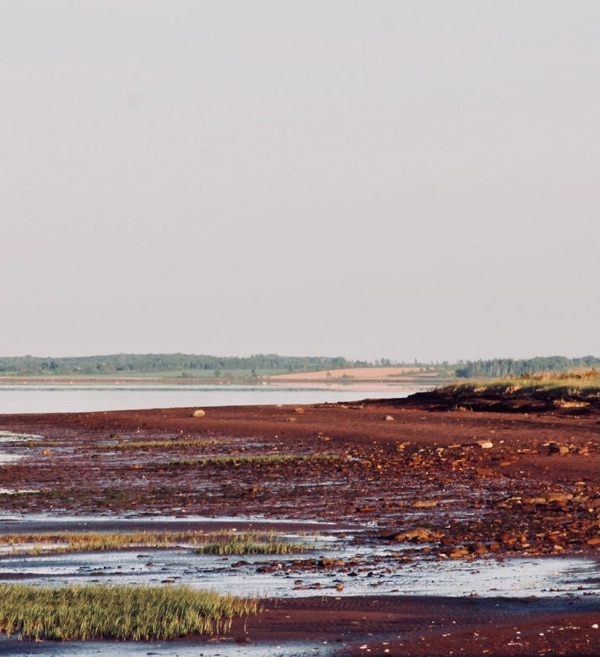Marcher comme harmonie : être avec/dans la nature en tant que « currere »
DOI :
https://doi.org/10.25071/1916-4467.40514Mots-clés :
le currere, la pédagogie de la marche, l’enquête poétique, le relationnelRésumé
Être physiquement et spirituellement en phase avec le monde qui nous entoure constitue le métier sur lequel nous tissons nos compréhensions curriculaires. Ici, nous nous efforçons de trouver l'extraordinaire dans l'ordinaire et de faire place à une manière poétique d'assister au curriculum vécu. Plus qu'une manière de faire de la recherche, nous considérons cette manière d'être comme une présence profonde et disciplinée avec / dans le monde où nous vivons. À travers nos propres pratiques individuelles de marcher sur la terre, notre physicalité explore les relations entre le chair et la pierre, et la pluie et les larmes, et l'immédiateté de la poétique prend forme. Nos pratiques de marche ouvrent l'espace non seulement à la pleine conscience, mais aussi au corps, où le moment présent a la capacité de l'infini. Ce type de contemplation active nous invite dans un lieu expansif où nous pouvons considérer la nature même de l'éducation et son potentiel pour favoriser ou empêcher l'enseignement, l'apprentissage, la vie et l'être holistiques. En écrivant ensemble, nous nous élevons et nous sortons les uns les autres du confinement métaphorique et littéral de nos contextes actuels et trouvons une invitation à marcher et à écrire dans l'émerveillement.Références
Baldwin, L., Block, T., Cooke, L., Crawford, I., Kim, N., Ratsoy, G., & Waldichuk, T. (2013). Affective teaching: The place of place in interdisciplinary teaching. Transformative Dialogues: Teaching & Learning Journal, 6(3), 1-20. https://journals.kpu.ca/index.php/td/article/view/1321
Ball, E. L., & Lai, A. (2006). Place-based pedagogy for the arts and humanities. Pedagogy, 6(2), 261-287. DOI: https://doi.org/10.1215/15314200-2005-004
Bartholomaeus, P. (2013). Place-based education and the Australian curriculum. Literacy Learning: The Middle Years, 21(3), 17-23.
Coelho, P. (1993). The alchemist. Harper Torch.
Csíkszentmihályi, M. (1996). Flow and the psychology of discovery and invention. Harper Collins.
Csíkszentmihályi, M. (1998). Flow: The psychology of optimal experience. Harper Perennial.
Gruenewald, D. A. (2003). Foundations of place: A multidisciplinary framework for place-conscious education. American Educational Research Journal, 40(3), 619-654. DOI: https://doi.org/10.3102/00028312040003619
Hotton, V. (2015). Walking practices in higher education: An inquiry into the teaching, writing and walking practices of five contemporary academics [Unpublished doctoral dissertation]. Simon Fraser University.
Irwin, R. (2006). Walking to create an aesthetic and spiritual currere. Visual Arts Research, 32(1), 75-82.
Israel, A. L. (2012). Putting geography education into place: What geography educators can learn from place-based education, and vice versa. Journal of Geography, 111(2), 76-81. DOI: https://doi.org/10.1080/00221341.2011.583264
Judson, G. (2015). Supporting ecological understanding through in-depth and imaginative study of a place-based topic or issue. Canadian Journal of Environmental Education, 20, 139-153. https://cjee.lakeheadu.ca/article/view/1352
Lasczik Cutcher, A. J. (2018). Moving-with & moving-through homelands, languages & memory: An arts-based walkography. Sense. DOI: https://doi.org/10.1163/9789463512480
Lyle, E. (2020). Contemplating how the places we dwell, dwell in us. In E. Lyle (Ed.), Identity landscapes: Contemplating place and the construction of self (pp. 1-13). Brill/Sense. DOI: https://doi.org/10.1163/9789004425194_001
Oliver, M. (2003). Owls and other fantasies: Poems and essays. Beacon Press.
Palmer, P. (2017). The courage to teach (20th ed.). Jossey-Bass. (First published in 1998)
Pinar, W. F. (1994). Autobiography, politics and sexuality: Essays in curriculum theory 1972-1992. Peter Lang.
Pinar, W. F. (2010). Notes on a blue guitar. Journal of Educational Controversy, 5(1), 1-9. https://cedar.wwu.edu/jec/vol5/iss1/18/
Roberts, E. J. (1998). Place and the human spirit. The Humanistic Psychologist, 26(1-3), 5-35. DOI: https://doi.org/10.1080/08873267.1998.9976964
Snowber, C. (2014). Dancing on the breath of limbs: Embodied inquiry as a place of opening. In A. Williamson, G. Bateson, S. Whatley, & R. Weber (Eds.), Dance, somatics, and spiritualities: Contemporary sacred narratives (pp. 115-130). University of Chicago Press.
Snowber, C. (2016). Embodied inquiry: Writing, living, and being through the body. Sense. DOI: https://doi.org/10.1007/978-94-6300-755-9
Snowber, C. (2018). Embodied perspectives on creativity. In C. Mullen, (Ed.), Creativity under duress in education? Resistive theories, practices, and actions (pp. 201-214). Springer. DOI: https://doi.org/10.1007/978-3-319-90272-2_11
Sobel, D. (2004). Place-based education: Connecting classrooms and communities. Orion Society.
Springgay, S., & Truman, S. E. (2017). A Transmaterial approach to walking methodologies: Embodiment, affect and sonic performance. Body and Society, 3(4), 27-58. DOI: https://doi.org/10.1177/1357034X17732626
Tait, L. (2016). A scattered people. In J. Latremouille, A. Bell, M. Krahn, Z. Kasamali, L. Tait, & D. Donald (Authors), kistikwânihk êsko kitêhk: Storying holistic understandings in education. Journal of the Canadian Association for Curriculum Studies, 14(1), 8-22.
Taneda, S. (2003). For all my walking: Free-verse haiku of Taneda Santouka with excerpts from his diary (B. Watson, Trans.). Columbia University Press.
Williams, T. T. (2012). When women were birds: Fifty-four variations on voice. Farrar, Straus & Giroux.
Téléchargements
Publié-e
Comment citer
Numéro
Rubrique
Licence
© Ellyn Lyle, Celeste Snowber 2021 
Copyright for work published in JCACS belongs to the authors. All work is licensed under a Creative Commons Attribution-ShareAlike 4.0 International license.


